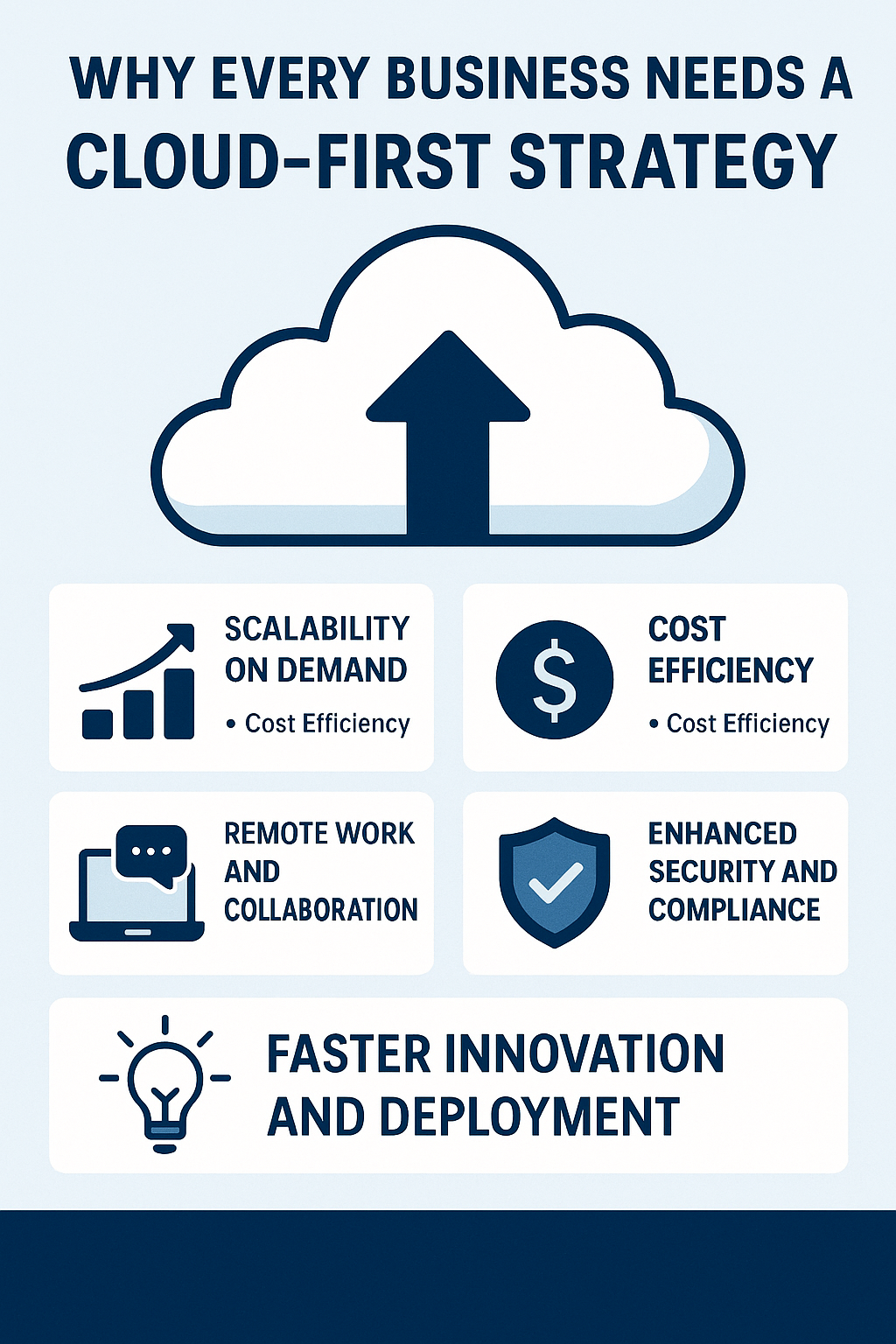Why Every Business Needs a Cloud-First Strategy

In today’s hyper-connected world, agility, scalability, and resilience are no longer luxuries—they are business imperatives. Whether you're a startup or a large enterprise, a cloud-first strategy is rapidly becoming a foundational approach for staying competitive in the digital age.
What Is a Cloud-First Strategy?
A cloud-first strategy means prioritizing cloud-based solutions over traditional on-premises infrastructure when designing or upgrading IT systems. Rather than defaulting to local servers or data centers, businesses evaluate cloud options as the primary solution for new applications, services, and infrastructure.
It doesn’t necessarily mean abandoning all existing systems overnight—it’s about making the cloud the default choice moving forward.
Why It Matters for Modern Businesses
Scalability on Demand
Traditional IT infrastructures are rigid. Scaling up often means expensive hardware investments and long timelines. Cloud services, on the other hand, allow businesses to scale resources up or down in real time. Whether it’s a sudden surge in website traffic or the need to expand to new markets, cloud platforms make it simple.
Cost Efficiency
The cloud reduces capital expenditures (CapEx) by shifting to a pay-as-you-go model. You only pay for the resources you use, which eliminates the need for upfront investments in hardware or software licenses.
Remote Work and Collaboration
With the rise of hybrid and remote work, businesses need infrastructure that supports accessibility from anywhere. Cloud platforms enable seamless collaboration across departments and geographies, keeping productivity high regardless of location.
Enhanced Security and Compliance
Contrary to earlier fears, cloud security has matured rapidly. Leading cloud providers offer advanced security features—encryption, identity management, disaster recovery—that often exceed the capabilities of most on-prem solutions. Plus, they stay up to date with compliance standards like GDPR, HIPAA, and ISO.
Faster Innovation and Deployment
Cloud-native tools allow teams to build, test, and deploy applications rapidly. With tools like CI/CD pipelines, containerization (e.g., Docker, Kubernetes), and serverless computing, innovation cycles are shortened significantly.
The Competitive Advantage
Businesses that embrace a cloud-first approach are able to respond to market shifts faster, launch products more quickly, and experiment without fear of massive upfront costs. This agility becomes a key differentiator in industries where time-to-market is critical.
In addition, analytics and AI services offered by cloud platforms can unlock powerful insights that drive strategic decision-making—turning raw data into actionable intelligence.
How to Get Started
- Assess your current infrastructure. Identify which systems are cloud-compatible.
- Start with low-risk migrations. Consider email, CRM, or file storage as initial candidates.
- Choose the right provider. Compare services from AWS, Azure, Google Cloud, etc.
- Train your teams. A cloud-first strategy requires a cloud-first mindset—invest in upskilling.
- Plan for security and governance. Define clear policies for access, backup, and compliance.
Conclusion
A cloud-first strategy is more than a technology shift—it's a business transformation. It sets the foundation for agility, efficiency, and innovation. Companies that embrace the cloud today are not just keeping up; they are building a resilient future.
